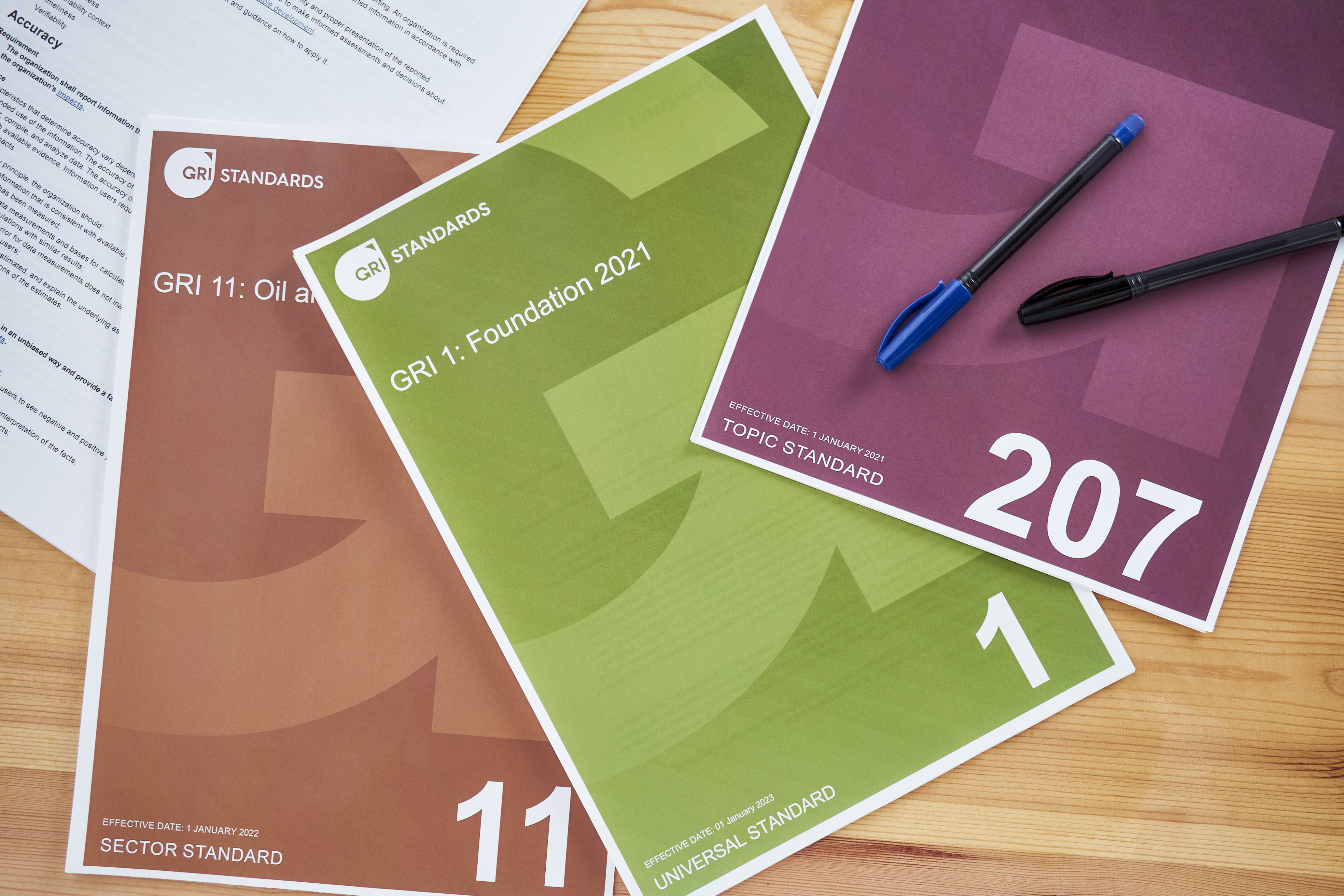Understanding the new naming system of the GRI Standards
Published date: 22 May 2024

Updates in the naming convention of revised and new Standards for easier and more intuitive referencing
Following the launch in 2021 of the revised Universal Standards and the publication of the first Sector Standards, GRI introduced a new and streamlined naming convention for the world’s most widely used sustainability reporting standards.
As a recent addition to the family of GRI Standards, Sector Standards were added three years ago. Their incorporation showcased the need to revise the Standards’ titles. Until this point, Universal Standards were number-coded as 100s, followed by the Topic Standards as 200s, 300s, and 400s.
In search of a clear and straight-forward way to integrate Sector Standards into this structure, it was decided that the whole naming convention would transition into a three-tier coding system:
- Universal Standards are known by single-digit numbers (GRI 1, 2 and 3.)
- Sector Standards are identified by a double-digit number, (starting with GRI 11: Oil and Gas) continuing in ascending order based on the release date for new Sector Standards.
- Topic Standards are identified with three-digit codes (starting with GRI 101: Biodiversity 2024), an approach that new or revised Topic Standards will follow in ascending order, as they become available.
Under the new system, the GRI Standards are structured and presented in a way that is more intuitive and reflects GRI’s integrated and complete modular system of reporting. In addition, since the previous approach was based on dividing standards into three subsets of economic, environmental and social topics, the multiple dimensions of impacts contained in some Standards made this approach challenging and restrictive.
The Global Sustainability Standards Board (GSSB) – the independent body responsible for developing and setting the GRI Standards – has developed a work program for standards development, following this naming system.
There are ongoing projects to create new Sector Standards – like the Sector Standards Project for Financial Services; and revised or new Topic Standards – such as the Topic Standards Project for Labor. As Topic Standards are progressively launched, they will replace the former ones and their naming will be changed following the new convention.